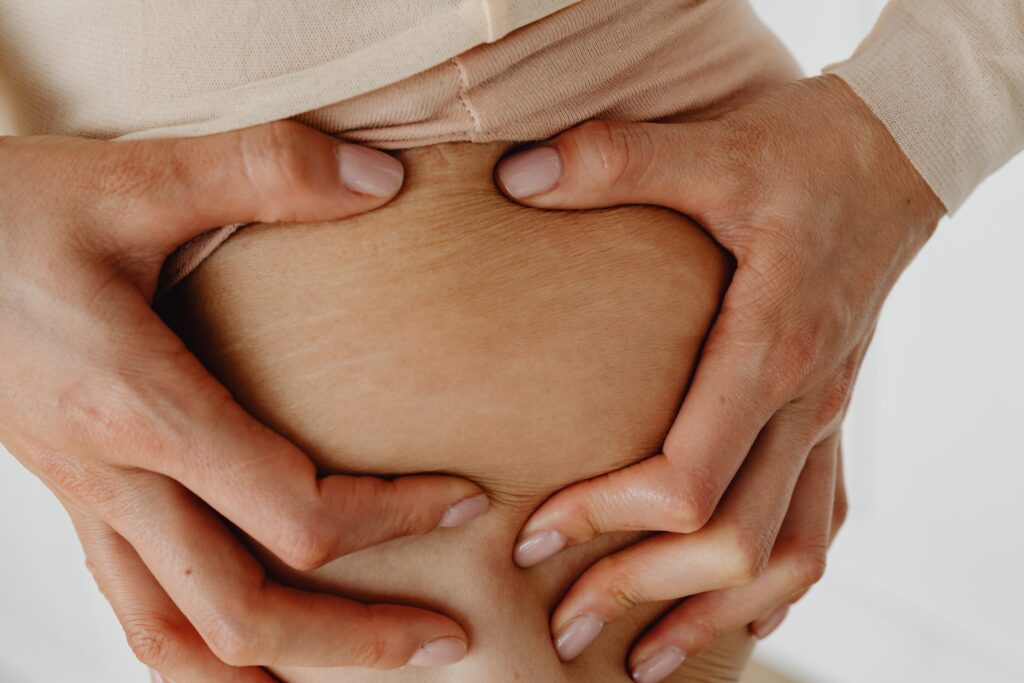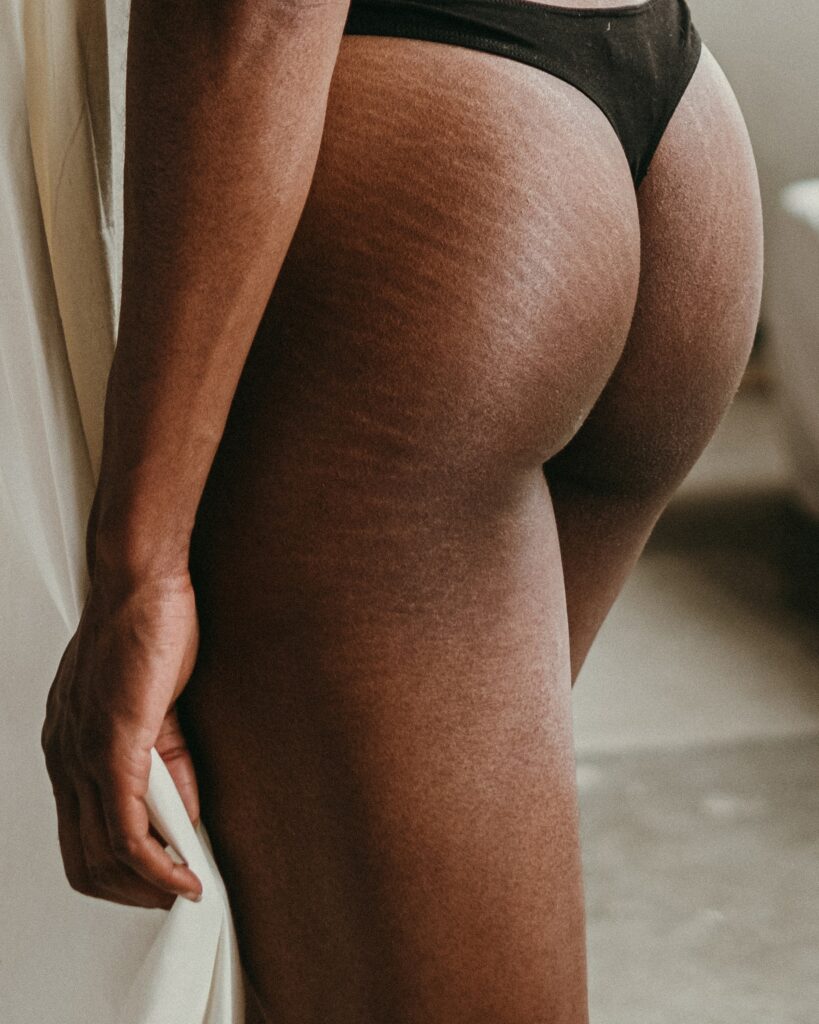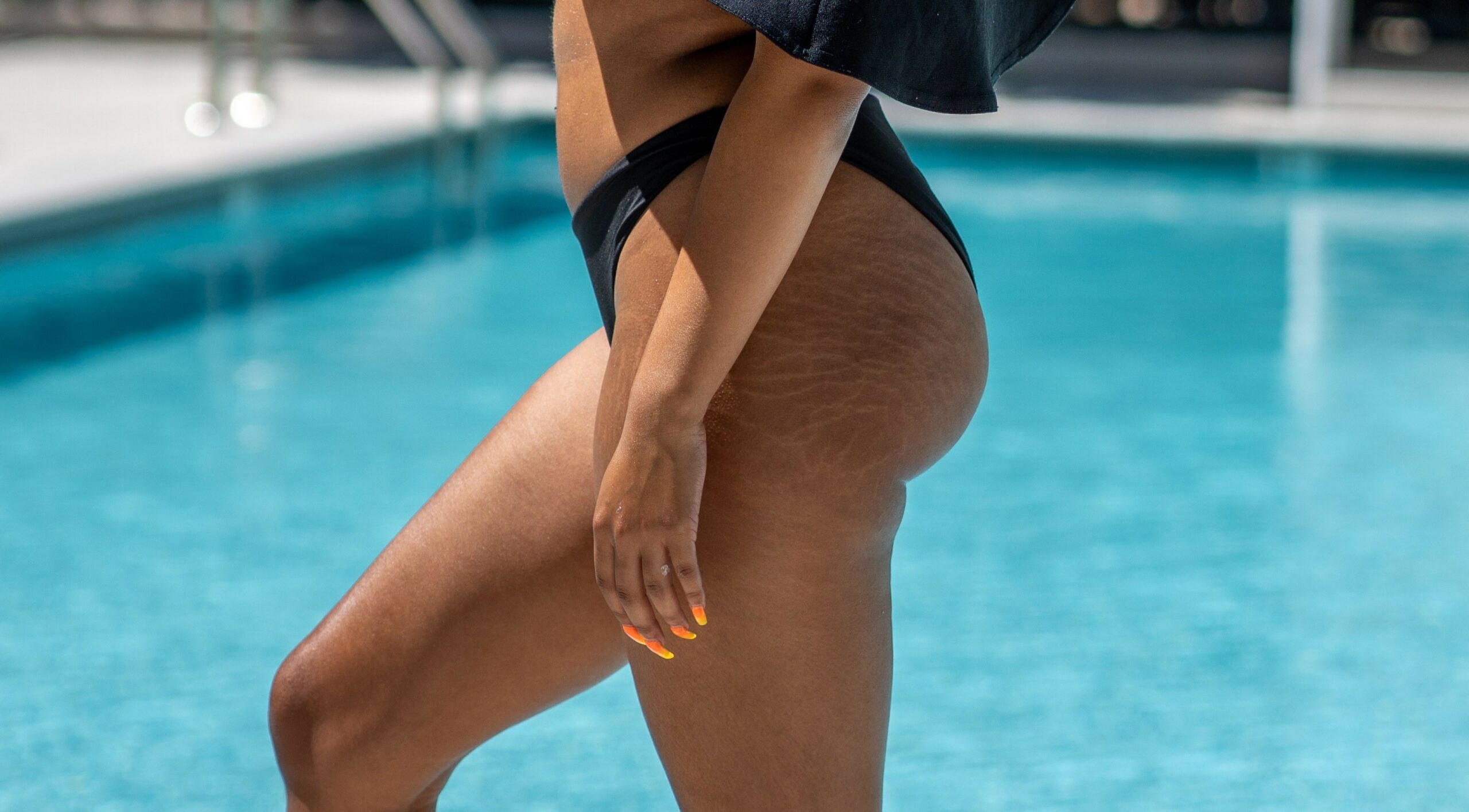Stretch marks are a common skin concern experienced by many individuals, particularly during periods of rapid growth or weight changes. They can be unsightly and may affect one’s self-confidence. In this article, we will explore the causes, prevention strategies, and effective treatment options for stretch marks. Whether you are looking to prevent their occurrence or reduce their appearance, this comprehensive guide will provide you with the information you need to make informed decisions about managing them.
Introduction to Stretch Marks

Stretch marks( a.k.a. striae) are visible lines that appear on the skin’s surface. They often have a different texture and color compared to the surrounding skin. They commonly occur on the abdomen, breasts, thighs, hips, and buttocks. While they pose no health risks, they still can be a cosmetic concern for many individuals.
What are the Causes?
Stretch marks occur when the skin is stretched beyond its limits, causing the underlying collagen and elastin fibers to break or tear. This stretching can happen due to various reasons, including:
- Pregnancy: The rapid growth of the abdomen during pregnancy.
- Puberty: Adolescents may develop stretch marks during growth spurts.
- Weight Fluctuations: Rapid weight gain or loss can cause forming of such marks.
- Bodybuilding: Intense muscle growth can lead to their appearance in certain areas.
- Hormonal Changes: Hormonal imbalances can make the skin more susceptible to stretch marks.
- Individuals with Genetic Predisposition: Some people are more genetically inclined to develop stretch marks.
- Overweight or Obese Individuals: Excess weight can put additional strain on the skin.
Understanding the Different Types
Stretch marks can be classified into two main types based on their appearance:
Red Stretch Marks
Red stretch marks, also known as striae rubra, are fresh and appear as pink, red, or purplish lines on the skin. They are typically raised and may cause itching or irritation. Over time, they may fade and become less noticeable.
White Stretch Marks
White stretch marks, also known as striae alba, are older stretch marks that have faded to a pale or silvery-white color. They are flat and have a scar-like appearance. They are more challenging to treat but can still be improved with the right interventions.
Common Areas Where Stretch Marks Appear
Stretch marks can occur on various parts of the body. The most common areas where they appear include:
Abdomen
Stretch marks often develop during pregnancy or significant weight changes in the abdominal region.
Breasts
Women may notice stretch marks on their breasts, particularly during pregnancy or breast development.

Thighs
Rapid growth or weight fluctuations can lead to the formation of stretch marks on the thighs.
Hips
Stretch marks may appear on the hips, especially in individuals who experience significant weight changes.
Buttocks
Rapid muscle growth or weight gain can cause stretch marks on the buttocks.
Can Stretch Marks be Prevented?
While it may not be possible to completely prevent stretch marks, certain strategies can minimize their occurrence. Consider the following tips:
- Maintain a Healthy Weight: Gradual weight changes are less likely to cause stretch marks than rapid fluctuations.
- Stay Hydrated: Proper hydration keeps the skin supple and elastic, reducing the likelihood of stretch marks.
- Moisturize Regularly: Apply moisturizers or oils to keep the skin well-hydrated and improve its elasticity.
- Protect the Skin from Sun Damage: Excessive sun exposure can damage the skin and make stretch marks more noticeable. Use sunscreen and cover the affected areas when exposed to the sun.
- Avoid Abrasive Scrubbing: Be gentle when exfoliating the skin, as harsh scrubbing can worsen the appearance of stretch marks.
Effective Treatments for Stretch Marks
While stretch marks may fade naturally over time, several treatments can help reduce their visibility. Consult with a dermatologist or healthcare professional to determine the best approach for your specific situation. Some commonly used treatments for stretch marks include:
Topical Creams and Lotions
Various creams and lotions contain ingredients that promote collagen production, improve skin elasticity, and reduce the appearance of stretch marks. Look for products with ingredients like retinol, hyaluronic acid, vitamin E, and cocoa butter.
Laser Therapy
Laser therapy uses targeted light beams to stimulate collagen production and reduce the appearance of stretch marks. This treatment is effective for both red and white stretch marks and usually requires multiple sessions for optimal results.
Radiofrequency
Radiofrequency treatments use heat energy to stimulate collagen production and tighten the skin. This method can help improve the appearance of stretch marks and enhance overall skin texture.

Microdermabrasion
Microdermabrasion involves exfoliating the skin’s outer layer to encourage cell turnover and improve the appearance of stretch marks. It can be an effective option for white stretch marks.
Chemical Peels
Chemical peels involve applying a chemical solution to the skin, which causes it to peel off, revealing smoother skin underneath. This procedure can minimize the appearance of stretch marks.
Natural Remedies for Stretch Marks
In addition to medical treatments, several natural remedies can help reduce the appearance of stretch marks. While their effectiveness may vary, incorporating these remedies into your skincare routine may yield positive results. Consider trying the following:

Aloe Vera
Aloe vera gel contains healing properties that can help fade stretch marks. Apply pure aloe vera gel to the affected areas and massage gently for a few minutes. Repeat this process daily for visible improvements.
Vitamin E
Vitamin E is known for its skin-nourishing and regenerative properties. Apply vitamin E oil or creams containing vitamin E to the stretch marks to help reduce their appearance over time.
Coconut Oil
Coconut oil is rich in fatty acids and antioxidants, making it a popular natural remedy for stretch marks. Massage warm coconut oil onto the affected areas regularly to moisturize the skin and promote its elasticity.
Cocoa Butter
Cocoa butter is a widely used natural remedy for stretch marks. It deeply moisturizes the skin, improves elasticity, and fades stretch marks. Massage cocoa butter onto the affected areas daily for the best results.
Hyaluronic Acid
Hyaluronic acid is a substance naturally found in the skin and is known for its hydrating properties. It can help plump and smooth the skin, reducing the appearance of stretch marks. Look for skincare products containing hyaluronic acid and incorporate them into your routine.
We recommend
Here are some of our favorite stretch mark prevention products:
Lifestyle Changes to Reduce the Appearance of Stretch Marks
In addition to topical treatments and natural remedies, certain lifestyle changes can contribute to minimizing the appearance of stretch marks:
Healthy Diet and Hydration
Maintaining a balanced diet rich in essential nutrients can promote healthy skin. Focus on foods that support collagen production, such as fruits, vegetables, lean proteins, and foods high in vitamins A, C, and E. Additionally, staying hydrated by drinking an adequate amount of water helps keep the skin hydrated and elastic.
Regular Exercise
Engaging in regular physical activity not only helps maintain a healthy weight but also improves blood circulation, which can support skin health. Incorporate exercises that target the areas prone to stretch marks to tone the underlying muscles and promote overall skin tightness.
Adequate Sleep
Proper sleep is crucial for overall skin health. During sleep, the body undergoes repair processes, including skin regeneration. Aim for 7-8 hours of quality sleep each night to promote healthy skin and minimize the appearance of stretch marks.
Embracing and Accepting Stretch Marks
It’s important to remember that stretch marks are a natural part of life for many people. They do not define your beauty or worth. Embrace and accept your stretch marks as unique marks that tell a story of growth, change, and resilience. Practice self-love and body positivity, focusing on the amazing things your body is capable of.
Conclusion
Stretch marks are a common skin concern that can affect individuals of all ages and backgrounds. While they may be difficult to prevent entirely, various treatments and lifestyle changes can help reduce their visibility. From topical creams and laser therapy to natural remedies and embracing self-acceptance, there are options available to manage and minimize the appearance of stretch marks. Remember, your body is beautiful and unique, stretch marks and all.
FAQs
1. Can stretch marks completely disappear?
- While stretch marks can fade over time, they may not completely disappear. However, various treatments and remedies can help reduce their appearance.
2. How long does it take for stretch marks to fade?
- The fading process of stretch marks varies for each individual. It can take several months to years for them to fade significantly.
3. Are there any side effects of laser therapy for stretch marks?
- Laser therapy is generally safe, but some individuals may experience temporary redness, swelling, or changes in skin pigmentation. Consult with a professional to understand the potential risks and benefits.
4. Are stretch marks only caused by weight gain?
- No, stretch marks can be caused by various factors, including rapid growth during puberty, pregnancy, muscle building, and hormonal changes.
5. Can I prevent stretch marks during pregnancy?
- While it may not be possible to prevent them entirely, maintaining a healthy weight, staying hydrated, and moisturizing.







